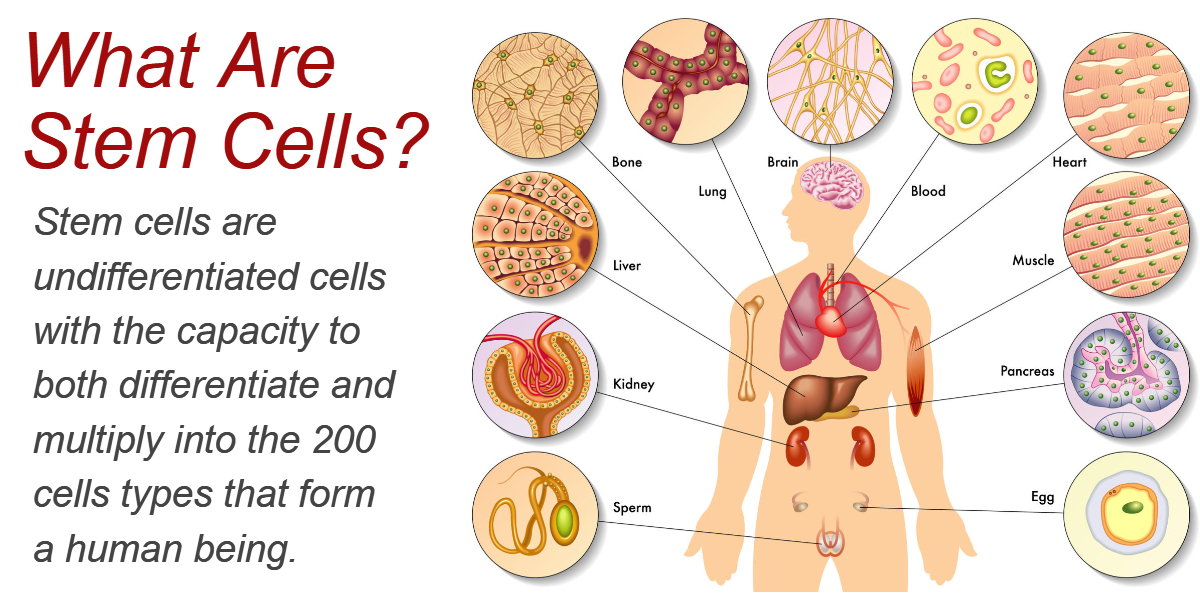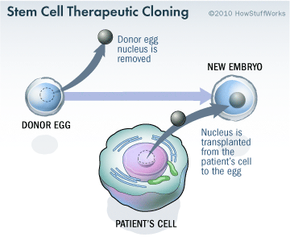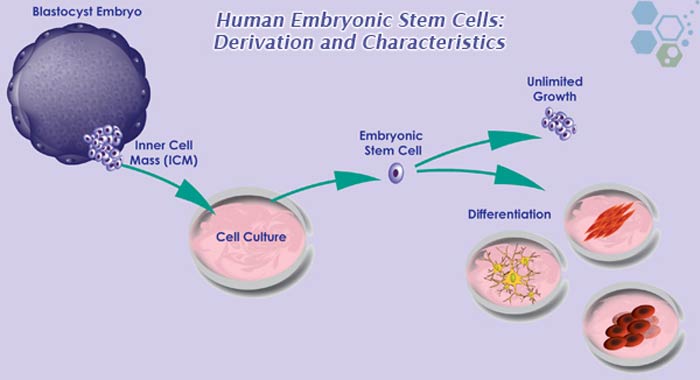Describe the Process Used for Harvesting Embryonic Stem Cells
Somatic cells are grown in the laboratory. Donor cells with the nucleus removed are provided.

What Are Stem Cells A Short Guide To Everything You Need To Know
Describe the process used for harvesting adult stem cells.

. The inner mass is therefore harvested and the embryo discarded. Blood will be withdrawn from one arm and passed through a machine that separates out the stem cells. Gene therapy would affect all cells in germ cells.
Why Is There Controversy About Using Embryonic Stem Cells. Embryonic stem cells ESCs are cells derived from the inner cell mass of the blastocyst prior to implantation. Describe the process used for harvesting embryonic stem cells.
This process yields a large number of stem cells that can be used on the patient. Here is how the process goes. 49 years experience Pathology.
Normally embryonic stem cells have been obtained by growing a human embryo into a cluster of cells that contain an inner cell mass. What Is The Process Used For Harvesting Adult Stem Cells. Fragements DNA with restrictions enzymes 3Load fragments into a gel run an electric current 4.
Because human embryonic stem cells are extracted from human embryos several questions and issues have been raised about the ethics of embryonic stem cell research. This paper gives insight into the Islamic bioethical discussion on harvesting and using human embryonic hESC and adult stem cells. A somatic cell is simply a body cell that is neither an egg nor a sperm cell.
Here the stem cells are separated from the blood a process known as apheresis. All tissue have stem cells. Once the collagen is broken down scientists can create a stem cell-rich solution.
It is the inner cell mass that is abundant in the embryonic stem cells. The advances both published online in Nature appear to overcome the key moral objection to the use of ESCs in medicine the fact that the cells can only be obtained by destroying a human. Blood is taken from a vein and circulated through a machine that removes the stem cells and returns remaining blood and plasma back to the patient.
Smaller fragments move faster creating a band pattern on the gel. - The catheter is placed or IV lines are placed into veins in each armband. Stem cells are easily retrieved from the bone marrow and peripheral blood.
Cord blood is harvested via a 16-gauge needle through the umbilical vein once the placenta has been delivered. They are pluripotent and have an unlimited capacity for self-renewal and the ability to differentiate into any somatic cell type. Bone marrow Yes.
Stem cell is taken either from bone marrow or from the blood directly Explanation. The stem cells divide several times and scientists divide the population into other dishes. A catheter is placed or an IV lines are placed into veins in each arm and the donors blood is sucked out The stems cells are removed and the blood is returned to the donor in a process called apheresis.
In the past ESCs were cultured with animal material eg mouse fibroblast feeder layers which. After several months there. Two bone marrow stem cells in your body divide to produce two white blood cells and two red blood cells respectively.
The procedure of removing blood stem cells is usually carried out in an outpatient setting. Traditionally embryonic stem cells were harvested by destroying the human embryo in a process called somatic cell nuclear transfer SCNT. Embryonic stem cells are obtained from early-stage embryos a group of cells that forms when eggs are fertilized with sperm at an in vitro fertilization clinic.
It describes some of the Islamic legal mechanisms involved in the bioethical discourse among Muslims. The rest of the blood product will be returned to you. Without any signals from the embryo the cells remain pluripotent.
After this inner cell mass is removed the embryo is ultimately destroyed. Only one cell would be affected in somatic cells List the steps in producing a DNA fingerprint. - Do the red and white blood cells have the same genome.
A needle connected to thin flexible tubing will be inserted into a vein in each of your arms. This collagen bond is chemically broken down to free the stem cells. Almost every cell in the body has a full identical genome.
The blood is then returned to the body through another tube that goes into a vein in the other arm. In the body collagen is used to bind stem cells to fat cells. These cells differ in structure and in function.
Adult do have stem cells. The embryos are grown into cell clusters. Somatic Cell Nuclear Transfer SCNT-Old method.
The major issue involving the harvesting of embryonic stem cells is that the embryonic stem cells can cause the destruction of an embryo. Bone marrow stem cells are harvested from the donor in an operating room. In this procedure the nucleus is removed from a somatic cell.
To grow the stem cells scientists remove them from the blastocyst and culture them grow them in a nutrient-rich solution in a Petri dish in the laboratory. They may be enriched with CD34 cells or purged by removing T lymphocytes or malignant cells29. Collect dna sample 2.
Apheresis takes about two to three hours. As the contemporary Islamic bioethical discourse is very diverse. A harvested embryonic stem cell is placed in a petri dish with nutrients and is allowed to divide.
Stem cells are derived from two locations primarily a Bone Marrow and b Blood The first step in this process is to remove the stem cell from its parent location and it is done in the following ways A For d Unlock 15 answers now and every day. The median volume harvested is 100ml7 Cell processing Prior to storage andor administration stem cells may be manipulated. Traditionally embryonic stem cells were harvested by destroying the human embryo in a process called.
Obtaining stem cells from the patient or a donor Blood stem cells are taken through a painless process called apheresis. Embryonic period usually refers to the period that starts with fertilization ultimately ending eight. This forces the stem cells from the bone marrow into the general circulation mobilization.
The process used in harvesting adult stem cells. Explain yes the two cells have the same genome. Producing a large number of stem cells is important.
The inner mass of the embryo is rich in embryonic stem cells. They continue dividing fill one dish and they are transferred to many more dishes and continue to grow.

Pin On Biomedical Research Stem Cells

The Source Harvesting Procedure Culture And Several Potential Uses Of Download Scientific Diagram


Comments
Post a Comment